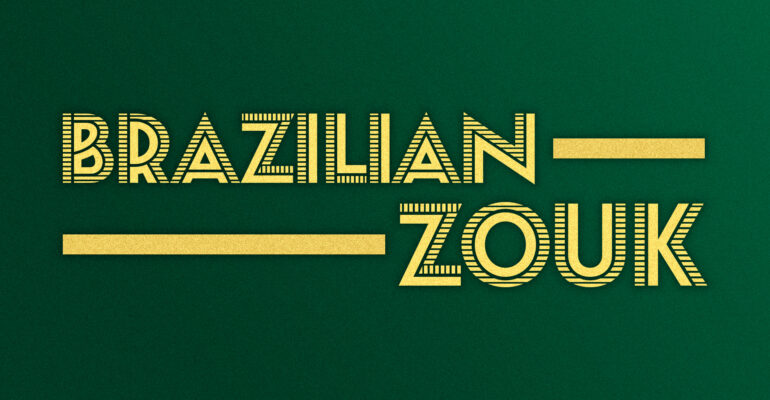What’s Brazilian Zouk?
What’s Brazilian Zouk?
Brazilian Zouk is more than just a dance—it’s an entire culture characterized by passion, rhythm, and connection. If you’ve ever found yourself captivated by couples gracefully moving in unison, their bodies swaying as if they share one heartbeat, you’ve likely been watching Brazilian Zouk. Originating in Brazil and now embraced worldwide, this sensually rhythmic dance is famed for its flowing body movements and intimate partner connection.
Why is Brazilian Zouk so enchanting? Imagine the beat starts, your partner’s hand in yours, and together you seamlessly interpret the music’s highs and lows through gentle waves and iconic head whips. It’s not merely about technique; it’s about channeling the music through every fiber of your being. Ahead, we’ll explore the dance’s origins, the culture that surrounds it, and essential tips for anyone eager to step onto the dance floor.
Historical Roots and Influences
African Rhythms as a Foundation
Brazilian Zouk, like many Brazilian art forms, owes much of its core to African heritage. The beats, syncopations, and fluid motions can be traced back to African rhythms imported through centuries of cultural exchange. Over time, these influences merged with European and indigenous musical traditions, creating an ever-evolving tapestry of sounds and movements.
The Rise of Lambada
In the 1980s, Lambada took Brazil by storm. Known for its quick, playful steps and close partner holds, Lambada was vibrant and flirtatious. Yet, as quickly as Lambada music rose to fame, it began losing its mainstream appeal. Dancers found themselves longing to preserve the sensual elements of Lambada while also seeking a new, modern sound.
The Transition to Zouk
Enter Brazilian Zouk. Borrowing slower, melodic rhythms from the French Caribbean’s “zouk” music, Brazilian Lambada dancers adapted their moves to this gentler tempo, evolving toward a more flowing and expressive form. Over time, the dance began to stand on its own, eventually dropping the “Lambada” label and adopting the name Brazilian Zouk. Today, it continues to capture hearts, transcending cultural boundaries and dance floors around the globe.
Brazilian Zouk Music
Instruments and Key Rhythms
A Brazilian Zouk song typically features smooth, flowing rhythms accentuated by instruments like guitar, bass, keyboards, and subtle percussion. The music is generally characterized by a strong beat that guides each undulating movement of the dancers. This is not the fast-paced Lambada of yesteryear; rather, it’s a hypnotic pulse that encourages a more intimate exchange between partners.
Modern Adaptations
As the dance gained an international audience, Brazilian Zouk music also expanded. You’ll find DJs and producers creating Zouk-friendly remixes of popular tracks from genres like R&B, pop, and even EDM. This approach keeps the music fresh and accessible, making it easier for newcomers to recognize songs and feel comfortable dancing to them. If you’ve heard a well-known tune slowed down and infused with a sultry, rolling beat, you’ve likely encountered a Zouk remix.
Core Techniques and Fundamental Steps
Body Posture and Fluid Movements
Brazilian Zouk is renowned for its fluid, wave-like motion. Maintaining proper posture helps you achieve that continuous flow. Stand tall, engage your core, and allow your hips and torso to move naturally with the melody. Imagine a ripple starting at your feet and moving all the way to your head, each part of your body responding to the music in turn.
Leading and Following Techniques
In Brazilian Zouk, partnership dynamics are everything. Leaders provide gentle, well-timed cues—almost like whispers—to guide movement. Followers attune themselves to these signals, merging their own style and interpretation with the leader’s guidance. Think of it as an intimate conversation where the music serves as a shared language.
Head Movements in Zouk
Brazilian Zouk has become famous for its head flicks or “head whips,” which add dramatic flair to the dance. These are most effective when executed with proper technique: keep your neck relaxed and move with the rhythm. Leaders and followers must both understand how to execute head movements carefully to avoid injury. When done right, these movements enrich the storytelling aspect of the dance.
Brazilian Zouk in Different Regions
Rio-Style Zouk
Hailing from Rio de Janeiro, this style is often seen as a direct successor to Lambada. Rio-Style features grounded steps and pronounced body waves. Dancers frequently stay in close embrace, heightening the sense of intimacy and emphasizing shared energy. If you’re a fan of lush body rolls and a closer partner connection, Rio-style may captivate you.
São Paulo-Style Zouk
São Paulo-Style Zouk emerged more recently, shaped by influences from other dance forms such as hip-hop and contemporary. This style places a bit more emphasis on intricate footwork and sometimes includes open positions. It’s ideal for dancers who love blending innovation with tradition, often adding a modern flair to the dance.
International Zouk Scenes
With fans spanning all continents, Brazilian Zouk has taken on new flavors in different corners of the world. Cities in Australia, Europe, North America, and Asia host thriving Zouk communities. Each region might add its own cultural nuances, making global Zouk festivals a vibrant showcase of style variations.
Fashion and Culture of Brazilian Zouk
Brazilian Zouk culture is laid-back yet expressive. The clothing typically mirrors this vibe—comfortable yet stylish. You’ll see everything from form-fitting outfits that accentuate body lines to breezy, flowy attire that moves beautifully with every spin or body wave. Footwear ranges from Latin dance heels to casual dance sneakers that allow a smooth pivot on the floor.
Beyond style, the dance community prioritizes inclusivity and warmth. You’ll often see beginners and seasoned pros dancing together at socials, united by their shared love for the dance. The open, welcoming nature of Brazilian Zouk fosters not just a learning environment but a supportive network where lasting friendships are formed.
Brazilian Zouk Festivals and Congresses
Brazilian Zouk lovers have ample opportunities to immerse themselves fully at festivals and congresses. These gatherings offer:
- Workshops led by top instructors
- Social Dancing where you can practice newly learned moves into the late hours
- Performances showcasing the pinnacle of Zouk talent
From Brazil’s bustling dance halls to Europe’s famous congresses in Amsterdam and Prague, these events serve as cultural and educational hubs. Attending one is an excellent way to elevate your skills, gain new perspectives on the dance, and meet fellow Zouk aficionados.
Brazilian Zouk vs. Other Dances
While many partner dances share Latin roots, Brazilian Zouk stands out for its characteristic fluidity and slower pace. Salsa, by contrast, features quick footwork and an energetic vibe, while Bachata focuses on side-to-side patterns and pronounced hip movements. Kizomba shares a close embrace similar to Zouk’s, yet the music and footwork differ significantly—Kizomba tends to have more subtle body isolation and less emphasis on head movements. Zouk’s hypnotic flow and versatility in musical interpretation truly set it apart.
Health Benefits of Learning Brazilian Zouk
- Cardiovascular Workout: Dancing keeps your heart pumping, building stamina and endurance.
- Enhanced Coordination: The dance demands you synchronize steps, isolations, and sometimes intricate head movements.
- Flexibility and Core Strength: Body rolls and fluid transitions help develop core muscles and improve flexibility.
- Stress Relief: Immersing yourself in music and movement is a natural mood booster.
- Community and Connection: Dancing fosters new friendships and meaningful connections, contributing to social and emotional well-being.
Social Etiquette in Zouk Communities
To make the most of your Brazilian Zouk experience, keep these social cues in mind:
- Invitations to Dance: A polite “Would you like to dance?” goes a long way. Most people are gracious and eager to share a dance.
- Respect Boundaries: Zouk can be intimate, but always respect personal space. Communicate clearly and be mindful of your partner’s comfort level.
- Personal Hygiene: Good hygiene is a must. Fresh clothes, deodorant, and minty breath are strongly recommended.
- Show Appreciation: At the end of a dance, a simple “Thank you” or warm smile acknowledges the shared experience.
Tips for Mastering Brazilian Zouk
- Master the Basics First: Understanding fundamental steps and timing sets a solid foundation for more advanced techniques.
- Invest in Good Instruction: Whether through group classes or private lessons, having a knowledgeable teacher can speed up your progress.
- Practice Musicality: Spend time just listening to Zouk music. Get a feel for the rhythm and tempo before attempting moves.
- Record Your Sessions: Video practice can help you identify areas that need improvement. It’s a great way to track progress over time.
- Stay Curious and Open-Minded: Watch performances, attend workshops, and learn from different instructors. Each perspective can enrich your dance style.
The Role of Connection and Musicality
At its core, Brazilian Zouk is a dialogue between two dancers, orchestrated by the music. The sense of connection—often described as a shared energy flow—elevates Zouk from a sequence of steps to a living, breathing conversation. Musicality is your guide, dictating when to pause, when to accentuate a note, and when to surrender to the rhythm. Dancers who hone both connection and musicality can convey deep emotions through even the simplest movements.
Learning and Teaching Brazilian Zouk
Online Resources
Modern technology has made it easier than ever to pick up Zouk skills. From YouTube tutorials covering basic steps to advanced membership-based platforms offering structured courses, you can learn at your own pace. Online resources allow you to revisit lessons whenever you need a refresher—perfect for busy schedules or for those living far from major dance hubs.
Certification Programs
As Brazilian Zouk gains global recognition, formal certification programs have popped up. Such programs typically cover methodology, musicality, and advanced techniques, ensuring instructors maintain a high level of expertise. Whether you aim to teach or just deepen your own understanding, certification can be a valuable milestone on your Zouk journey.
Common Misconceptions about Brazilian Zouk
- “It’s the Same as Lambada”: While Brazilian Zouk was born from Lambada, the two have evolved into distinct dances with different musical structures and techniques.
- “It Requires Extreme Flexibility”: Some moves are dramatic, but many dancers focus on more subtle waves. Flexibility can be built over time.
- “It’s Too Sensual to Be Appropriate”: Zouk can be sensual but it’s not inherently sexual. Much depends on each dancer’s personal interpretation.
- “It’s Only Popular in Brazil”: Brazilian Zouk boasts a vibrant global community, with thriving scenes in nearly every continent.
- “It’s Too Hard for Beginners”: Like any dance, the basics are accessible, and with practice, you’ll soon feel comfortable on the dance floor.
Conclusion
Brazilian Zouk isn’t just another Latin dance—it’s a worldwide phenomenon where music, movement, and human connection intersect. With its fluid transitions, memorable head movements, and heart-centered culture, Zouk offers both a physical and emotional outlet. Whether you’re a complete newcomer or a seasoned dancer, Zouk holds unlimited potential for self-expression, community building, and pure enjoyment.
The Future of Brazilian Zouk
As Brazilian Zouk continues to spread, teachers and dancers find innovative ways to blend it with contemporary music and dance forms. Workshops and online resources make it accessible to people from all walks of life. Whether you experience it in the heart of Rio or at a local studio in your hometown, the dance remains a testament to human creativity and cultural fusion.
Importance of the Portuguese Language
For those who truly want to immerse themselves in Brazilian Zouk, learning Portuguese can be a game-changer. Understanding the lyrics and cultural context of the songs can deepen your emotional connection to the dance. It also opens doors to engaging more authentically with native Brazilian dancers and Zouk communities. Interested in taking your Zouk journey to the next level?
Join our Portuguese for Zouk Dancers course, designed specifically to help you not only move like a Brazilian but also speak like one. This specialized program will enhance your dance experience by giving you the language tools to fully appreciate the music and culture that inspired Brazilian Zouk.
Learn Portuguese the Brazilian Way! 🇧🇷✨
At The Brazilian Ways, we believe language learning should be fun, immersive, and deeply connected to culture. Our unique courses help you speak Portuguese naturally while experiencing Brazil through its music, films, literature, and dance.
🎶 The Brazilian Music Club – Learn Portuguese through the rhythm and lyrics of Brazilian music.
🎬 The Movie Club – Improve your Portuguese while exploring the best of Brazilian cinema.
📖 The Short Story Club – Enhance your skills by diving into Brazilian literature.
💃 Portuguese for Zouk – Connect with the Zouk dance community while learning Portuguese.
✨ Join a vibrant community of learners and experience Brazil through language!
👉 Explore our programs and start today! 🚀
📲 Follow us on Instagram for more engaging content, language tips, and cultural insights: @thebrazilianways














